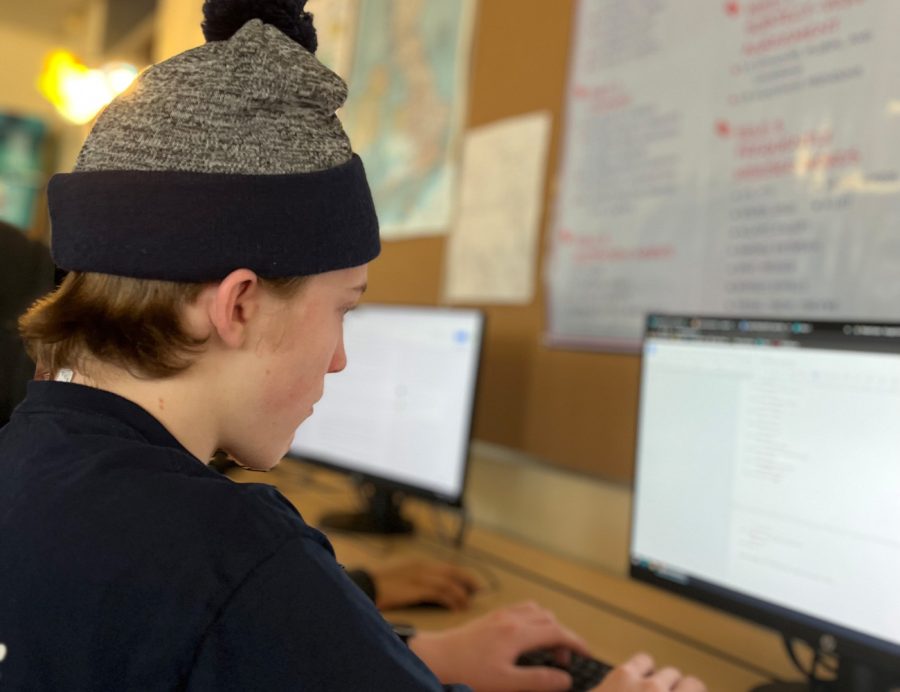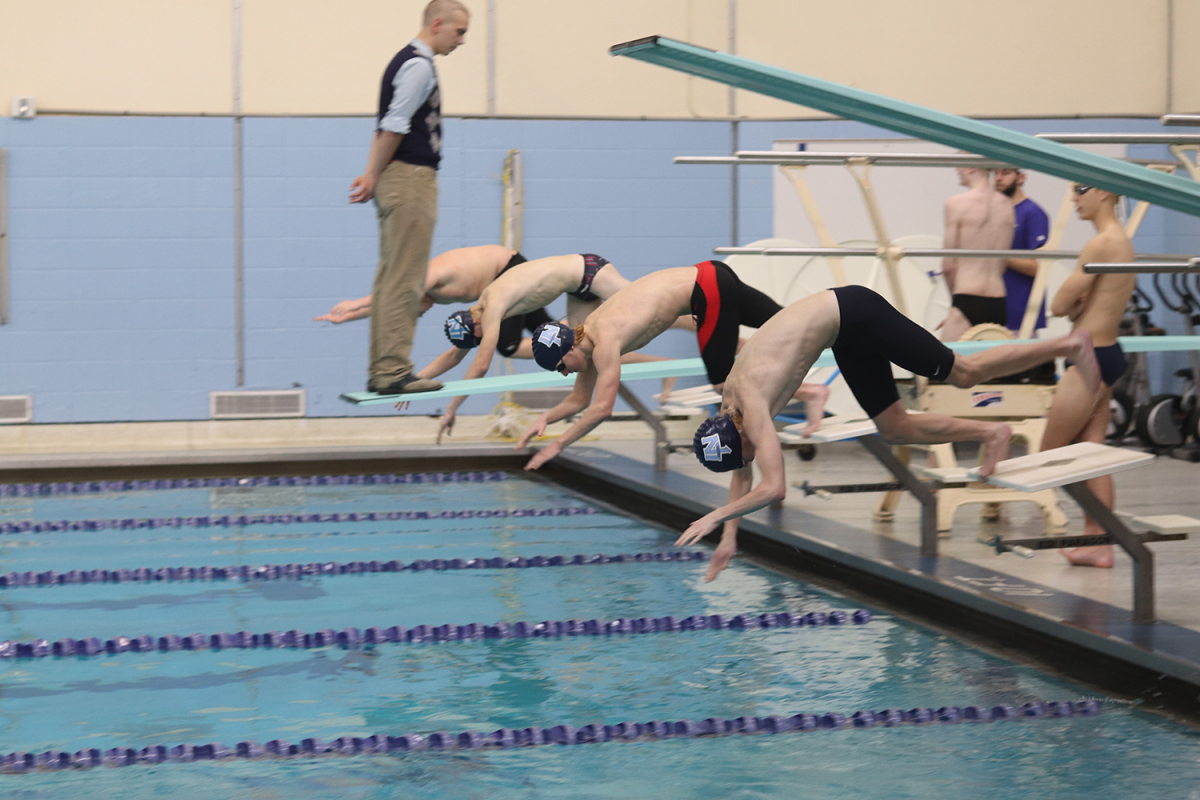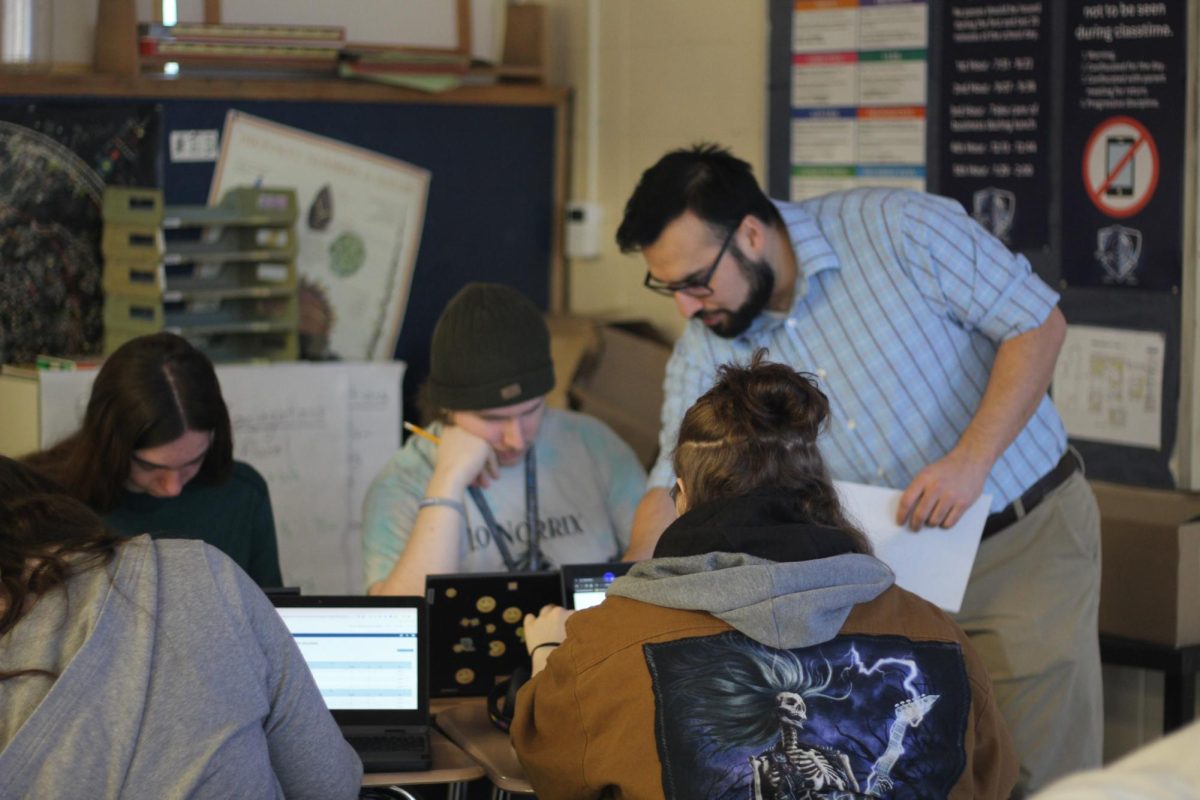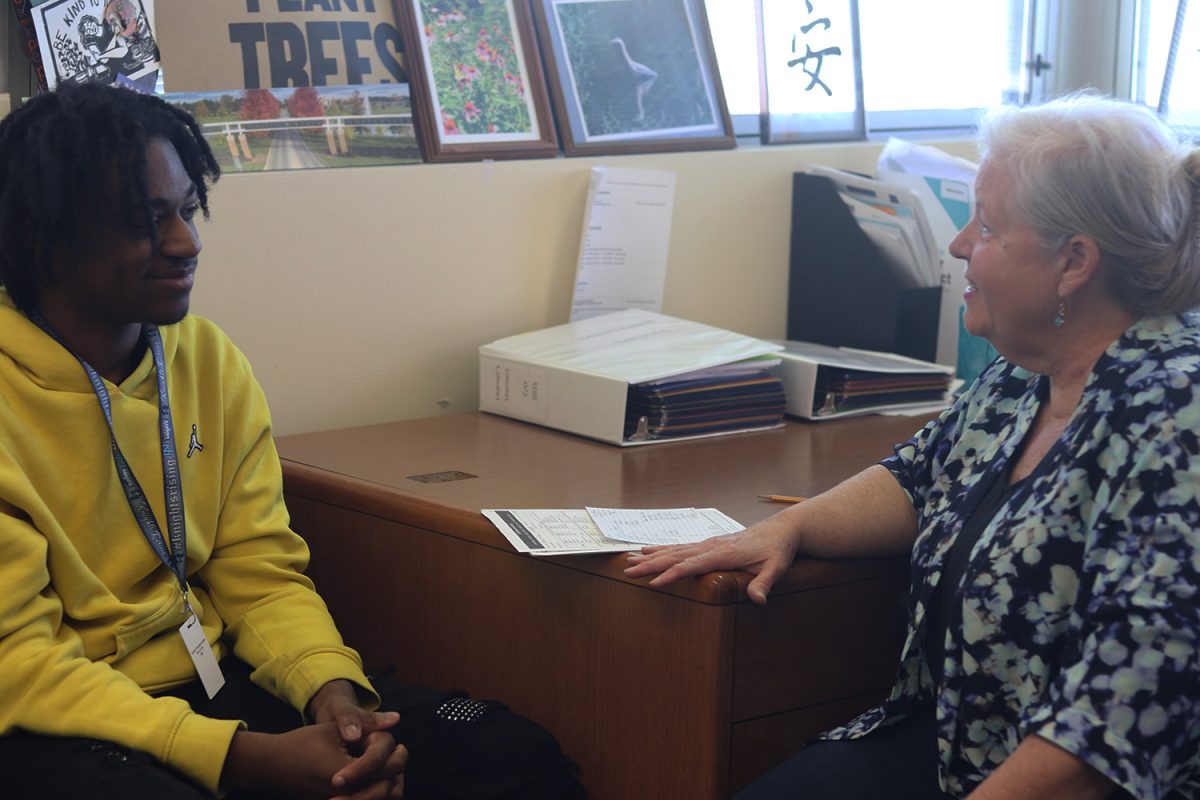Students and teachers talk about how the pandemic affected their motivation and how it persists to this day
Credit: Juan Ortiz-Ponce
Freshman Carter Pickett works on finishing his study guide for his journalism class. He knows if he finishes it and consistently studies it the final exam will be a piece of cake.
March 17, 2023
It’s a typical day in a high school classroom. More than half the students are distracted, on their phones with no motivation to do their work. These students also wonder why they have such low grades.
The effects of the COVID-19 pandemic forced people to isolate and had negative effects on students, something that still persists now. This has affected teens’ motivation and continues to change their daily lives.
The University of Wisconsin-White Water discusses how to recognize a student’s motivation and indications of motivation.
“There are three general indices of motivation: choice, effort, and persistence. Recognize students’ needs for self-determination and autonomy, and provide opportunities for choice and control. Understand that students may be intrinsically and extrinsically motivated to learn.”
Family tends to be an important source of motivation for many students. Although there are many ways to recognize how motivated a student really is, parents aren’t perfect. Students often accept the way they try to motivate them, even if it’s a way that doesn’t fit the students learning or motivation style..
“Probably my parents motivate me the most,” said freshman Roberto Garcia. “I understand that sometimes I am very fidgety, but I do try. Well, the way they motivate me is if I don’t do my work, I’ll be in a lot of trouble.”
Motivation affects how students learn and whether they show up to school. Higher levels of motivation allow students to participate more and finish assignments before deadlines. Showing up to school and socializing can increase motivation. Humans are social creatures that benefit from pushing each other.
“What motivates me to keep coming to school? Uh, it’s all really friends being social, all that jazz,” said Garcia.
It’s also necessary for teachers to be actively involved in the classroom environment. The students need to feel like they belong in that classroom and that the teacher wants their students to succeed and develop.
When the COVID-19 pandemic happened, it was hard envisioning the classroom environment that students and teachers were used to from the year prior. Students had trouble learning and understanding the teachers. Students could be on their phones with their computer microphone and camera off. Many were just waiting for their online school day to come to an end.
“Yes, the pandemic was a bad time for a student’s learning and development,” freshman English teacher Kyler Cook said. “It really slowed down the way students learned. They got away with more too. They could pretty much cheat on tests or have other things on the side, and none of us would notice. It definitely slowed down a big percentage of our students’ learning.”
Although students have definitely had trouble getting motivated again, it is certainly happening. Things are slowly going back to normal, and students are coming back to normal pre-quarantine lives. The pandemic definitely played with everyone, but it is over and we can focus now on bigger things.
Freshman Carter Picket said, “Yeah, I definitely found myself slacking off during online school. I would log in to my computer on my bed and just put it off to the side. I do notice that some of the bad habits I did develop from quarantine, I have stopped doing them. All of us are able to accomplish what we want to do, we just need to be motivated to do it.”












Kellan Swager • Mar 23, 2023 at 1:39 pm
Could be better
Juan Ortiz • Apr 28, 2023 at 7:58 am
Really kellan
Thomas Andrie • Mar 17, 2023 at 1:26 pm
w